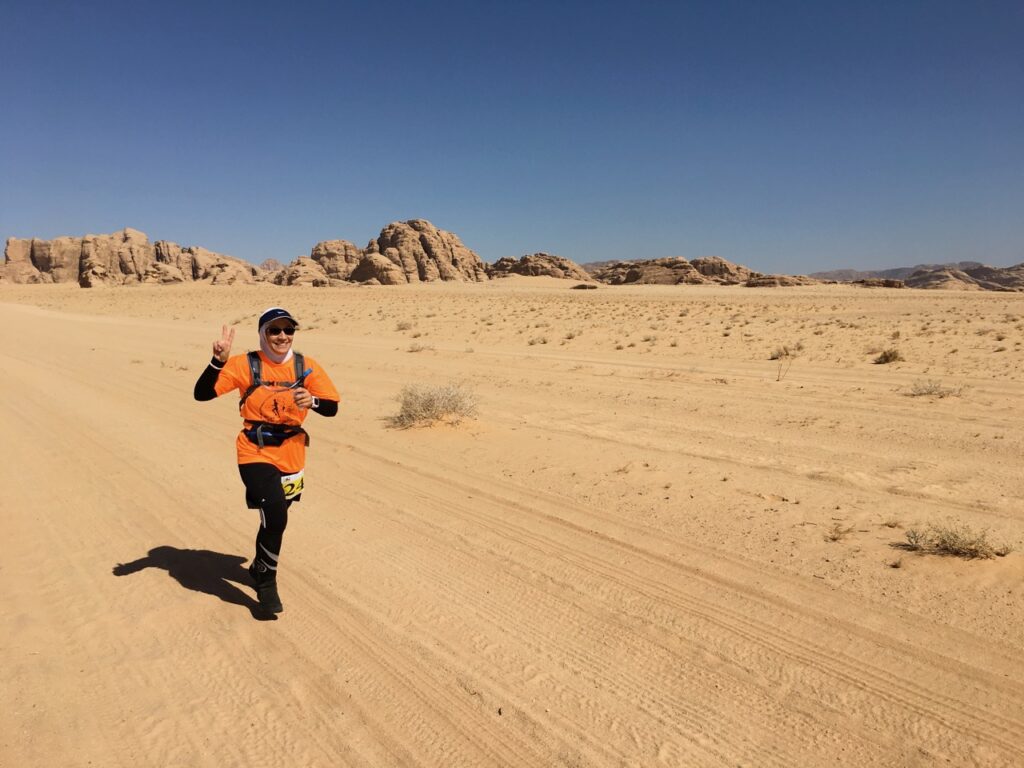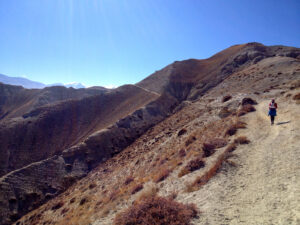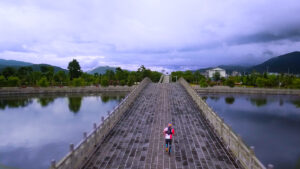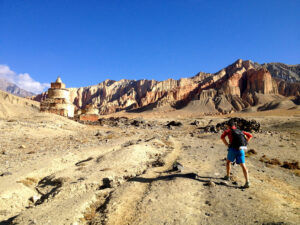Ask any average cross-section of the populace whether they are “an athlete” and few will respond in the affirmative. However, many will explain that they are into running, skiing, cycling, or backpacking, as if those pursuits were neither athletic nor integral to their “real life.” Instead, most people compartmentalize life, separating athletic pursuits from personal life, from professional obligations, and so on. Far too many have lost sight of the interconnectedness of all that makes up the grandeur of life, lost the intrinsic understanding of how every action complements every other, how everything in our human lives is connected to “the big picture.”
This even holds true for triathletes and other multi-sport athletes as well. Simply excelling at three or more sports rather than one, while definitely a tiny step in the right direction, is not enough on the path to excellence. And if excellence is what cross-training and the multi-sport lifestyle is all about, then it’s time to quit being so single-minded in our athletic pursuits, time to start living the way of the outdoor athlete.
Steve Ilg wrote, “The outdoor athlete seeks not an arena but embraces the globe” by finding a way to naturally express oneself athletically in each and every possible natural arena that one encounters. And it is this diversified approach to athletic outdoor experience, as opposed to the training specificity which so many robotically follow, which is the key to excellence in both a cumulative and activity-specific sense.
More importantly, by pursuing a variety of outdoor sports while simultaneously stepping way back from them to see them in context and the lessons which they offer, the multisport lifestyle becomes a teacher unto itself. Call it cross-training for life, if you will. This understanding will increase your enjoyment and success at athletic pursuits and at life in general. For seemingly disparate pursuits have much to offer one another, no matter how much it may seem otherwise. And stepping back, they all offer profound insights into life “away” from sport.
Can snowshoeing add to one’s grace and skill while cycling, for example? Quite assuredly so, for snowshoeing naturally puts one in touch with the terrain, texture, feel, and sound of the snowscape over which one is shoeing. This heightened awareness translates into better road or trail sensitivity while cycling and thus enables better handling, cornering, braking, and balance. The same benefits and lessons learned from snowshoeing also apply to running, skiing, and even driving a car. The beautiful cardiovascular, biomechanical, and neuromuscular benefits of snowshoeing also transfer straight across the board into other athletic pursuits and life experiences, both physical and otherwise.
And what of SCUBA diving? Done mindfully and with practice, it teaches maximum return for minimal investment in movement, energy, and air expenditure. SCUBA diving teaches grace of movement and non-movement, for any wasted energy or movement equals less air remaining and therefore less “bottom time.” Thus one learns to make the most of every physical movement, every breath, every nanosecond while in the water. As well, the diver learns to think, feel, and move in a three-dimensional plane while swimming upside down, “standing” on their head, and otherwise exploring and flowing through the underwater world. Along the way, a diver slowly learns that a three-dimensional environment like the ocean is not a prerequisite to moving and living three dimensionally. This translates into conservation of energy and momentum on-land, making any activity (athletic or otherwise) less taxing. One learns not to waste energy, 24 hours a day, and to move, breath, and even live more gracefully.
Inline skating is not just a great butt and thigh workout, but it also teaches profound, yet simple, lessons about direction, flow, inertia, and more. While all the blade companies of the world tout their new braking systems as the must-have new gadget, true bladers hardly use their brakes at all. For bladers simply flow through their environment, be it traffic-clogged street, busy “bike path,” or wide-open highway. Blading teaches one to see into their own personal future, to avoid danger, collisions, and obstructions, all the while threading a beautiful line through the mayhem in which they traverse. Blading is about conversation of momentum, avoiding catastrophe, and making it look easy, which it is for those in the know. Who needs brakes when one flows through their environment like a rolling aikido master? (The same can be said for fixed gear cycling on the road, though I do recommend a brake for that pursuit.)
Cycling opens the world, while providing the most efficient means of transportation ever devised for humans. Whether training, racing, commuting, or just riding for fun, cycling teaches blending with the landscape like no other mechanized activity. Momentum, aerodynamics, geography, climate, and more: they all open up their secrets at cycling-speed. At the same time, the bicycle puts the rider in touch with the human environment, generating waves, smiles, and hi’s from passers-by and fellow road users, not to mention teaching one how to predict, negotiate, and avoid those less friendly to those on two wheels. But most of all, cycling is the ultimate, grin-a-minute, great equalizer, ready to embrace any and all in a wind-in-your-hair, two-wheeled adventure.
And mountaineering? To climb a mountain is to sit literally at the foot of a master and slowly, ever so slowly, crawl to its dizzying heights of education and inspiration. Patience, route-planning, preparedness, team-work, and regular stepping back to see the whole mountain in its totality are all prerequisites and perks of the ascent. And perhaps more than any other outdoor pursuit, climbing necessitates a true multi-faceted fitness blend of strength, flexibility, range of motion, mental tenacity, and heart-pounding devotion to the moment.
The most exciting aspect of this wholistic view of outdoor multisport performance is its natural transfer into the totality of one’s activities. Much will change in your life if you cease to separate your athletic pursuits from the rest of your life and instead acknowledge the interconnectedness of all that you do.
Heightened attentiveness will become an integral part of your life. Not missing those never negligible details will make your work, reading, speaking, and listening more effective and rewarding. Postural awareness will make you more comfortable, at ease, and efficient at something as simple as sitting, not to mention typing at a computer, conducting a meeting, or working at an assembly line. Intuitive appreciation and recognition of the breath will become a common opportunity to center and renew oneself in times of stress and relaxation. Regularity in athletic pursuits will keep your mind, body, and spirit fresh for each new day and all that it brings.
Perhaps most importantly, though, you’ll quit living and longing for some far off timeframe (the next race, for example), but rather you’ll live for the moment and remember that your workout is everywhere. Living and loving each and every day of your life will make you a happy camper – whether you’re at work, home, or play.
So, just as the innumerable components of our common biosphere are intrinsically interconnected and interdependent, so too are all aspects of our own individual lives. Success in the outdoor world of multisport can – and should – equal success in the indoor world, for they are one in the same. Thus we must not let even one subsystem of our lives be neglected, for the entire system will be taxed and incapable of maximum growth and potential. A great panorama of outdoor sports awaits those who seek, both to engage us in play and to teach us life lessons that permeate our entire day.
Chief Seattle of the Suquamish Tribe of Northwestern America observed that “Man did not weave the web of life, he is merely a strand in it. Whatever he does to the web, he does to himself.” We may use our heightened awareness to understand that our own individual lives are webs within this web: we are each and every one of us our own personal biosphere within the greater biosphere. With that understanding we must learn to better steward the ecosystems within and without, for that is the path to excellence, the way of the outdoor athlete.
- By Chris Kostman. Originally published in 1993 in Biosphere II Newsletter, Triathlete, and ULTRA Cycling, then later in Fitness Magazine, Sweden, May 1999, and yet again in Endurance News, #62, March 2009.




